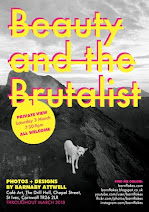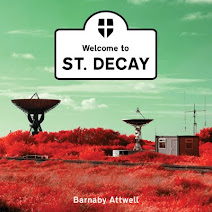Picture Leonardo da Vinci as your ultimate polymath: painter, sculptor, architect, musician, mathematician, engineer, inventor, anatomist, geologist, cartographer, botanist, and writer. It seems almost greedy of him to have so many abilities, what with the rest of the population in those days being unable to read let alone paint masterpieces and invent stuff. Even Michelangelo, though arguably not quite touched with the same brush of genius as Leonardo, did paint the Sistine Chapel (though obviously not all by himself) and carved some decent sculpture, including David, as well as being an accomplished architect, poet and engineer.
The Renaissance – which means rebirth – was a great time of learning, enlightenment and flourishing creativity in the arts and sciences. So it makes sense that the term Renaissance Man derives from this age, where men were experts in many fields of art and science (and indeed, the division between the two wasn't as marked as it is now).
Victorian times also embodied many of these Renaissance elements, with great leaps in knowledge, science, engineering and the arts. It seems polymaths flourished in these times too, and some were autodidacts (I imagine the Victorian polymath as a gentleman – always a man – of means, pottering around in his laboratory or on the Devon coast with his geology hammer and notebook).
In the sciences there was Thomas Young (1773-1829) who made important discoveries in the fields of vision, light, solid mechanics, energy, physiology, language, musical harmony and Egyptology. Sir Francis Galton (1822-1911) was an explorer, meteorologist, statistician, biometrician and expert in personal identification. William Whewell (1794-1866) was Master of Trinity College, Cambridge, as well as being a scientist, Anglican priest, philosopher, theologian, and historian of science who also achieved distinction in both poetry and mathematics.
Sir Richard Francis Burton (1821-1890) was an explorer, geographer, translator (most famously of the Kama Sutra and A Thousand and One Nights), writer, soldier, orientalist, cartographer, ethnologist, spy, linguist (he apparently spoke 29 languages), poet, fencer, and diplomat.
Even if they weren't actually 'officially' deemed polymaths, Victorians such as Sir Arthur Conan Doyle packed an awful lot into their days: he was rather dismissive of his most famous character Sherlock Holmes, and thought he would be remembered instead for the dozens of other sci-fi, fantasy, historical and romance novels he wrote, as well as plays, poetry and non-fiction works. Conan Doyle was also a physician (before he became a full-time writer) and prolific public speaker who dabbled in politics. He was a tireless campaigner for justice (see Julian Barnes' book Arthur & George) and in his later years, advocate of Spiritualism. Likewise, William Morris (1834-1896) was a textile designer, poet, novelist, translator and socialist activist.
Nowadays we don't stay at jobs as long as we used to, so we ought to all be seasoned polymaths, but going from, say, admin assistant in one company to marketing assistant in another, doesn't exactly embody the spirit of the term. The contemporary polymath is more likely to be a pop star who also acts in Eastenders.
There is so much knowledge floating around at the click of a button (or swipe of a screen) that there's really no time or reason to become a polymath: if we want to understand something, we look it up, then move onto the next thing. Instead of polymaths, we now have generalists (the opposite of specialists) who aren't as
bright as polymaths, but like to know a little bit of everything.
For me, it's enough to get out of bed in the morning, commute to work, perform a
soul-destroying pointless activity all day, go back home, eat, go to
sleep, wake up and do it all over again. That's being a polymath in my
book.
Wednesday, April 29, 2015
Friday, April 24, 2015
Notes on not seeing famous people
I didn't see Russell Brand yesterday. Nor did you – right? But let me explain – he walked past me as I was carrying a box in Aldwych; I didn't notice him, I've no idea if he did me. Anyway, I wasn't told about him walking past until an hour later by a colleague. But does it count as a famous person sighting? Well, the consensus seems to be "no". But like my friend who was at a party Madonna was at (but never saw her) or my friend who was at an exhibition Bryan Ferry was at (but never saw him), it must surely count for something for being at the right place at the right time but just not seeing the celebrity. In fact, it's possibly even cooler, it's like: I had better people to talk to (at the Madonna party); more interesting exhibits to look at (at the Bryan Ferry exhibition) and was too busy carrying a box (in Aldwych) to notice. Which is true.
Previously on Barnflakes:
Near coincidences
Previously on Barnflakes:
Near coincidences
Thursday, April 23, 2015
Crisp colours
Ever since I can remember, green packets of crisps meant Cheese and Onion; blue packets was Salt and Vinegar; red was Ready Salted. Maybe it was because it was always that way that made it seem logical – I imagined the onions as green spring onions; and blue is the colour of the sea where salt comes from. Ready Salted is in the name – ready = red. Whatever the reason, the colour seemed to reflect the taste somehow. But since the 1980s, Walker's crisps have insisted on the reverse: their Cheese and Onion crisps come in blue packs; their green packs contain Salt and Vinegar crisps. I've never got used to this and never will. It just seems perverse, akin to a council suddenly deciding to change the meaning of traffic light signals – the red light meaning go and the green light signifying stop.
Such is the influence of Walker's that other brands now emulate their backwards crisp packet colouring – I've recently discovered Sainsbury's crisps follow the same pattern. It irks me; there should be standardisation of such things. Customers in supermarkets complain that they've bought the wrong pack of crisps – yes, they could read the pack but the shelves are so full of different brands and varieties, it would be reassuring to buy according to colour and not have the complication of having to actually read the pack.
The three basic crisp types – despite the introduction of such mouth watering flavours as Sweet Chill, Paprika, Marmite, Salsa, Steak & Ale, Honey & Mustard – have stood the test of time and remain the best selling crisp varieties.
Previously on Barnflakes
The agony of choice
Such is the influence of Walker's that other brands now emulate their backwards crisp packet colouring – I've recently discovered Sainsbury's crisps follow the same pattern. It irks me; there should be standardisation of such things. Customers in supermarkets complain that they've bought the wrong pack of crisps – yes, they could read the pack but the shelves are so full of different brands and varieties, it would be reassuring to buy according to colour and not have the complication of having to actually read the pack.
The three basic crisp types – despite the introduction of such mouth watering flavours as Sweet Chill, Paprika, Marmite, Salsa, Steak & Ale, Honey & Mustard – have stood the test of time and remain the best selling crisp varieties.
Previously on Barnflakes
The agony of choice
Tuesday, April 14, 2015
My daughter's top ten films (aged 8)
1. Harry Potter series 1-8* (Chris Columbus (1–2); Alfonso Cuarón (3); Mike Newell (4); David Yates (5–8), 2001-2011)
2. My Neighbour Totoro (Hayao Miyazaki, 1988)
3. Maleficent (Robert Stromberg, 2014)
4. The Witches (Nic Roeg, 1990)
5. Big Hero Six (Don Hall & Chris Williams, 2014)
6. The Smurfs (Raja Gosnell, 2011)
7. Annie (Will Gluck, 2014)
8. The Chronicles of Narnia: The Voyage of the Dawn Treader (Michael Apted, 2010)
9. Oz the Great and Powerful (Sam Raimi, 2013)
10. Kiki's Delivery Service (Hayao Miyazaki, 1989)
__________
*In order of preference:
#1 (Harry Potter and the Philosopher's Stone, 2001) and #2 (Harry Potter and the Chamber of Secrets, 2002): "Exciting, getting to know characters; seeing what they're capable of"
#8 (Harry Potter and the Deathly Hallows – Part 2, 2011): "Violent, dark, exciting"
#7 (Harry Potter and the Deathly Hallows – Part 1, 2010): As above
#3 (Harry Potter and the Prisoner of Azkaban, 2004): "Adventurous"
#4 (Harry Potter and the Goblet of Fire, 2005): "Mysterious"
#6 (Harry Potter and the Half-Blood Prince, 2009): "Romantic"
#5 (Harry Potter and the Order of the Phoenix, 2007): "Boring"
I tried, I tried, but, really, there was nothing I could do about her inevitable obsession with Harry Potter. She's even gone off Star Wars. At least she likes Studio Ghibli.
Previously on Barnflakes:
Notes on Harry Potter
My daughter's top ten films (aged 7)
My daughter's top ten films (aged 5)
My daughter's top ten films (aged 3)
Eponymous heroes 'largely dull'
2. My Neighbour Totoro (Hayao Miyazaki, 1988)
3. Maleficent (Robert Stromberg, 2014)
4. The Witches (Nic Roeg, 1990)
5. Big Hero Six (Don Hall & Chris Williams, 2014)
6. The Smurfs (Raja Gosnell, 2011)
7. Annie (Will Gluck, 2014)
8. The Chronicles of Narnia: The Voyage of the Dawn Treader (Michael Apted, 2010)
9. Oz the Great and Powerful (Sam Raimi, 2013)
10. Kiki's Delivery Service (Hayao Miyazaki, 1989)
__________
*In order of preference:
#1 (Harry Potter and the Philosopher's Stone, 2001) and #2 (Harry Potter and the Chamber of Secrets, 2002): "Exciting, getting to know characters; seeing what they're capable of"
#8 (Harry Potter and the Deathly Hallows – Part 2, 2011): "Violent, dark, exciting"
#7 (Harry Potter and the Deathly Hallows – Part 1, 2010): As above
#3 (Harry Potter and the Prisoner of Azkaban, 2004): "Adventurous"
#4 (Harry Potter and the Goblet of Fire, 2005): "Mysterious"
#6 (Harry Potter and the Half-Blood Prince, 2009): "Romantic"
#5 (Harry Potter and the Order of the Phoenix, 2007): "Boring"
I tried, I tried, but, really, there was nothing I could do about her inevitable obsession with Harry Potter. She's even gone off Star Wars. At least she likes Studio Ghibli.
Previously on Barnflakes:
Notes on Harry Potter
My daughter's top ten films (aged 7)
My daughter's top ten films (aged 5)
My daughter's top ten films (aged 3)
Eponymous heroes 'largely dull'
Subscribe to:
Posts
(
Atom
)













